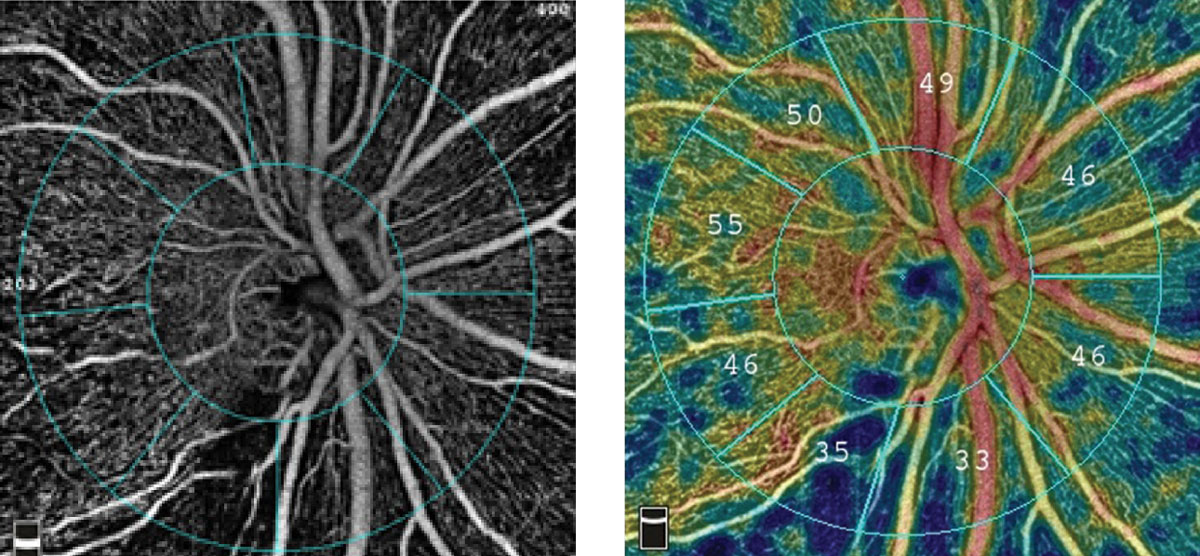 |
|
Longitudinal OCT-A measurements complement OCT-derived structural metrics for the evaluation of functional VF loss in glaucoma patients. Photo: Optovue. Click image to enlarge. |
Previous studies have failed to address whether combining OCT and OCT-A measurements improves the performance of predictive models compared with relying solely on OCT for monitoring visual field (VF) progression. A recent study did just that, employing a supervised machine learning approach to evaluate the efficacy of both approaches.
A total of 110 eyes of glaucoma suspects (33.6%) and patients (66.4%) with a minimum of five 24-2 VF tests and three optic nerve head and macula images over an average follow-up duration of 4.1 years were included. VF progression was defined using a composite measure including either a “likely progression event” on Guided Progression Analysis, a statistically significant negative slope of VF mean deviation or VF index or a positive pointwise linear regression event. Feature-based gradient boosting classifiers were developed using different subsets of baseline and longitudinal OCT and OCT-A summary parameters.
Different subsets of baseline and longitudinal OCT and OCT-A structural measurements were used as input features to develop and evaluate the classification performance of gradient boosting classifiers through machine learning models for the detection of glaucomatous VF findings. Progression was detected in 28 eyes. The combination of OCT and OCT-A measurements increased the classification performance of the gradient boosting classifier models compared with using either OCT or OCT-A measurements alone. “Moreover, the addition of longitudinal OCT/OCT-A features to the baseline measurements substantially improved the classification accuracy of the gradient boosting classifier models,” the authors noted.
A previous study demonstrated that faster OCT-A-derived circumpapillary capillary density loss is associated with a higher probability of concurrent VF progression regardless of disease stage. The current study was in agreement, as the addition of longitudinal rates of change of OCT and OCT-A measurements considerably improved the predictive performance of the investigated models for the detection of VF progression.
“We demonstrated that the combination of OCT and OCT-A measurements using feature-based gradient boosting classifier machine learning models improves the accuracy of the detection of glaucomatous VF progression compared with using individual OCT or OCT-A metrics alone,” the authors concluded. “The classification accuracy of the models considerably improved after the addition of longitudinal OCT/OCT-A features to the baseline measurements. OCT-A measurements have the potential to provide a complementary dimension to established OCT indices for monitoring VF progression in glaucoma patients.”
Kamalipour A, Moghmi S, Khosravi P, et al. Combining OCT and OCT-angiography longitudinal data for the detection of visual field progression in glaucoma. Am J Ophthalmol. October 15, 2022. [Epub ahead of print]. |

